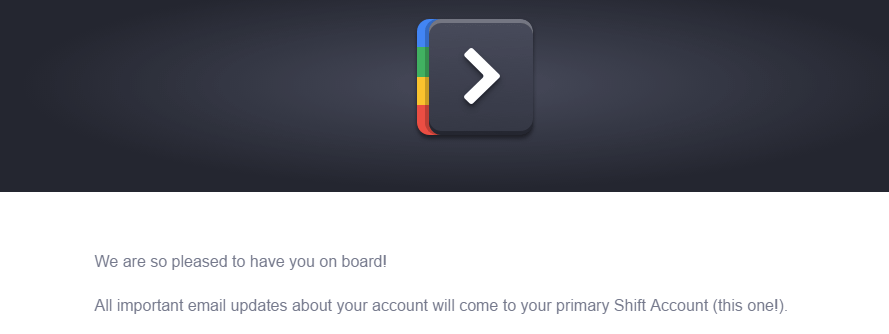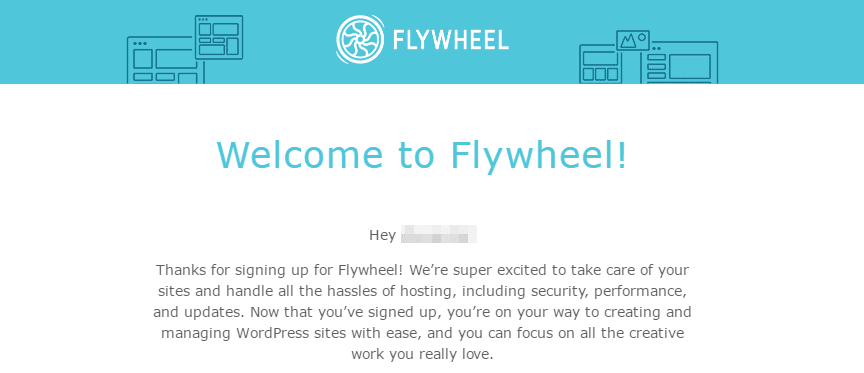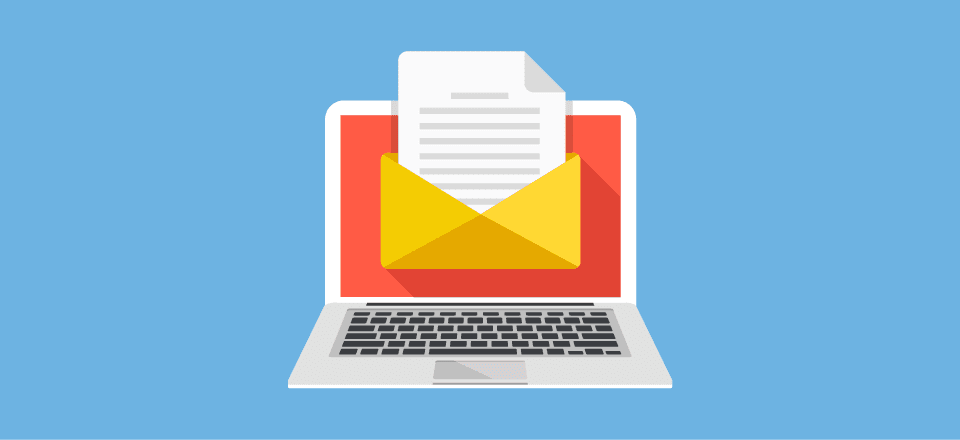Email marketing campaigns are only successful if you can manage to get your subscribers to open your messages. One of the best ways to do this is to build up expectations using welcome emails, since they tend to have far better click-through rates than other types of messages.
If you get your welcome emails right, chances are your subscribers will be left looking forward to your next ones. In this article, we’ll teach you all about the importance of a great welcome email, and how to harness their power in four simple steps. You’re welcome!
What Welcome Emails Are (And How They Can Help You)
As the name implies, a welcome email is a message (or a series of them) sent to brand new subscribers. Think about it as rolling out the welcome mat, so to speak.

It might sound frivolous, but the fact is welcome emails can be valuable tools for your marketing campaigns. Let’s explore two of the reasons why:
- They have great open-rates. Welcome emails tend to be viewed more than other types of messages, which makes them a useful method for presenting the value of your list to subscribers.
- You can increase engagement with new subscribers. A good welcome email should set the tone for your relationship with your subscribers. If you succeed in piquing their interest, chances are your subsequent emails will do better for it.
Now you’re on board, let’s talk about how to make sure your welcome emails hit the mark.
How to Harness the Power of Welcome Emails (In 4 Steps)
Before we dive in, we recommend considering an email marketing tool with an autoresponder feature, such as MailChimp or AWeber. That way, you’ll be able to automate the sending of your welcome emails, which is important from an efficiency standpoint – especially as your list grows in numbers.
Let’s take a look at the four steps.
Step #1: Use a Friendly Tone

A friendly tone is often the best introduction for your services.
Discussion about using the right tone in your emails is an oft-mentioned element, but that’s because it’s so critical. For example, subscribers may be more open to the idea of further emails if you make an effort to sound friendly, rather than ‘salesy’.
Plus, a warm tone is just what you need to boost engagement. It makes you sound more approachable, which might prompt subscribers to hit the reply button or even convert if you’re making them an offer.
There may be some niches or industries that need to make an effort to sound more professional in their emails – lawyers or accountants, for example. However, there are a couple of simple steps you can take to make any welcome email sound more friendly:
- Personalize your emails. Most email marketing tools include personalization features that enable you to do things such as referring to each subscriber by their name. It’s a small touch, but it makes your emails feel less like cookie-cutter content.
- Avoid overly formal language. Using formal phrases can make your emails sound less like friendly messages and more like business meetings. You want your readers to feel at ease and think about you as someone that wants to help them, so try not to sound too stiff!
The right tone can work wonders for your emails, and it might just be the ticket to getting subscribers to read your future messages, so keep things friendly!
Step #2: Outline the Benefits of Your Subscription

Being upfront about how your email campaigns can help your subscribers is always a good policy.
It might sound callous, but many people won’t find your list worth subscribing to unless it provides them with specific benefits. Most people get multiple emails every day, and the last thing they need is additional messages cluttering their inbox. In short, you have to ask yourself, What sets my emails apart?
If you know the answer to that question, you’ll definitely be able to promote your emails. Your welcome message should make sure subscribers understand the value of receiving your emails. That should enable you to keep open-rates high and weed out subscribers who aren’t interested in your content from the get-go.
The best way to go about this is to be clear about your intentions. Here are a few tips on how to do so:
- Talk about the type of content your subscribers will receive. Your welcome email should tell subscribers what to expect from future messages and how remaining a part of your list will help them.
- Set a schedule. Welcome emails should be sent just as you get a new subscriber, but the rest of your emails should probably be scheduled well in advance with some room in between. That way, your subscribers will know when to expect new messages, and they won’t feel spammed.
When composing your next welcome email, think about it as a hook. If you set the right bait, you’ll reel in more subscribers, which brings us to the next step.
Step #3: Provide Value Right Out of the Gate

E-books are one of the most popular rewards for new subscribers.
This step is a bit more hands-on than our other tips, but it tends to be very efficient. To be blunt, sometimes you’ll need to offer a tangible reward for users to join your list, hence the idea of providing value right out of the gate.
We’re not talking about slipping people five bucks to join your list, of course. Think more along the lines of an exclusive e-book, or content that’s not yet released, and you’ll be right on the mark. The reason why this works is obvious – just by providing you with their email, users will receive something much more valuable to them.
Let’s go over a few tips to pick the right reward and how to deliver it:
- Choose a reward your subscribers will find helpful. For example, it wouldn’t make sense to give away a fishing e-book if you’re going to promote WordPress products on your email campaign. Think about a problem your users need help with, and work on giving them the necessary tools to solve it.
- Use your welcome email to deliver on your promises. If you talked someone into joining your mailing list in exchange for a reward, you need to deliver on your promise – and your welcome email offers you a perfect opportunity to do so. Plus, this basically ensures they’ll open that first email.
- Add additional content to your message. As we mentioned during step number two, it’s important to use this opportunity to ensure that readers know the benefits of staying on as long-term subscribers.
You could be forgiven for thinking that promising a reward in exchange for a subscription might be a fruitless exercise. However, as long as you provide your subscribers with something that can really help them, you’ll be good to go.
Step #4: Consider Using a Series of Welcome Emails

Flywheel sends multiple emails to welcome you over the course of a few days.
So far, we’ve talked about welcome emails in the singular, but the truth is you don’t need to limit yourself to a single one. In fact, sometimes it can be better to use an entire series of them.
Don’t worry – we’re not talking about spamming your subscribers to death. Think about it more as maximizing your chances of engaging with them through multiple emails. A welcome email series is basically a regular marketing campaign, but targeted specifically to new subscribers.
The question is, when is it better to send a single welcome email versus multiple ones? It’s going to depend on whether you can justify sending several messages by making sure they’re all valuable to your readers. Here’s how to do it:
- Make sure not to add filler emails to your series. Every email in your welcome series should be there for a specific reason. Whether it is delivering on a reward, discussing a particular topic, and so on. If you’re just sending multiple emails for the sake of doing so, chances are they won’t engage your users as well as possible.
- Spread them out over multiple days. You never want to hit your subscribers with multiple emails during the same day to avoid coming across as spammy. Welcome emails aren’t exempt from this rule either, so stick to one per day until the series is over.
- Don’t drag your series on for too long. At some point, a series of emails will stop being about welcoming your subscribers, and will move onto discussing new topics.
Let’s talk about that last point before moving on. Every welcome email series is essentially a sales pitch. Ultimately, you want your subscribers to know how you can help them and why they should pay attention to you. Once you’ve made your point, it’s time to move on to new campaigns. Keep in mind, some users won’t stay on as subscribers, and that’s completely normal. Don’t let it get you down!
Conclusion
A great welcome email – or a series of them – is the perfect way to start your relationship with your subscribers on the right foot. These types of messages tend to have fantastic click-through rates, which makes them an invaluable element of your marketing. That way, your readers will be left wanting more, and you’ll increase the chances of your future campaigns succeeding.
Let’s recap the four steps to great welcome emails:
- Use a friendly tone.
- Outline the benefits of your subscriptions.
- Provide value right out of the gate.
- Consider using a series of welcome emails.
Do you have any questions about how to make sure your welcome emails hit the nail on the head? Ask away in the comments section below!
Article thumbnail image by Jane Kelly / shutterstock.com









Welcome emails that are too heavy on marketing speak are a real turn-off. There’s a writer whose books I’ve read more than one of, and so one day I decided to subscribe to his blog. I’m not a big blog subscriber in general. Hence, why I waited as long as I did. So, I sign up for his blog, and man did he go overboard with the marketing speak. Everything was a selling point to the point where I thought, dude, you didn’t leave your marketing job behind you to become a writer like you always write about. You’re still in marketing. You’re now just a marketer who writes. The follow-up emails were even more of a turn-off.
Look, I get that if you run a blog there’s always going to be some level of self-promotion involved if you want to grow your readership, but I believe there’s a right way to do it and a wrong way to do it.
And the right way involves striking a balance. Also, humor. Insert some humor.
It can be done decently, as you’ve laid out in this post so hopefully others will take it to heart. Granted, I would totally advise against “a series of welcome emails.”
Nothing makes me unsubscribe quicker than rapid fire.
Hi Jeffrey, thanks for your input! You’re definitely right that welcome emails need to feel genuine to be effective, and that too much ‘salesy’ talk can turn some people away.